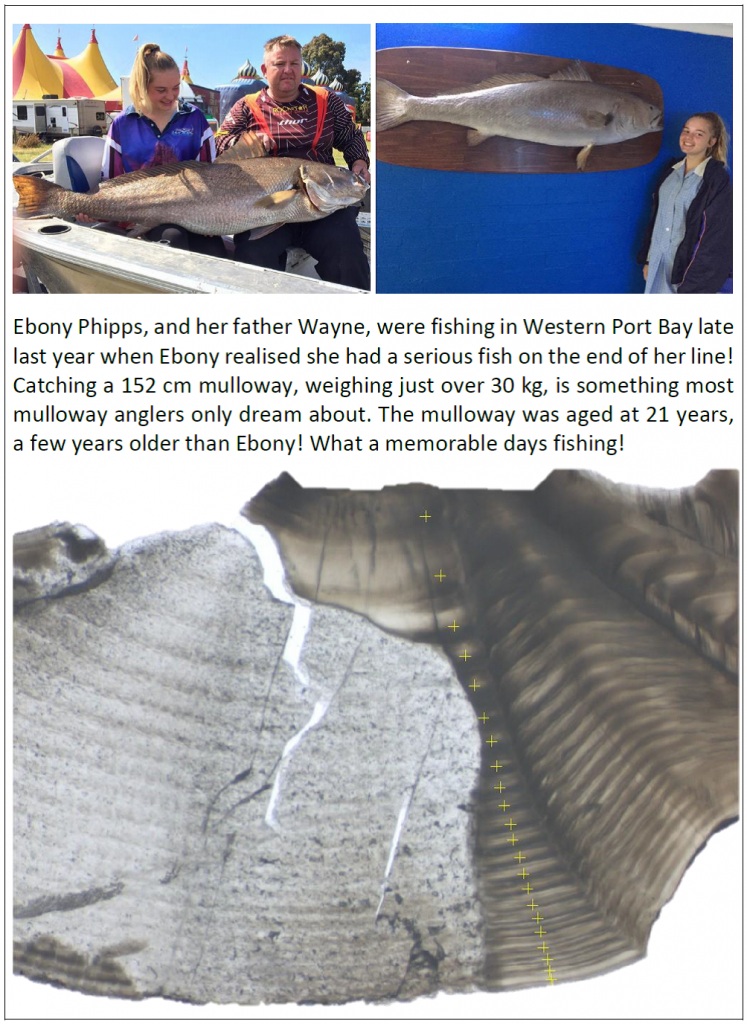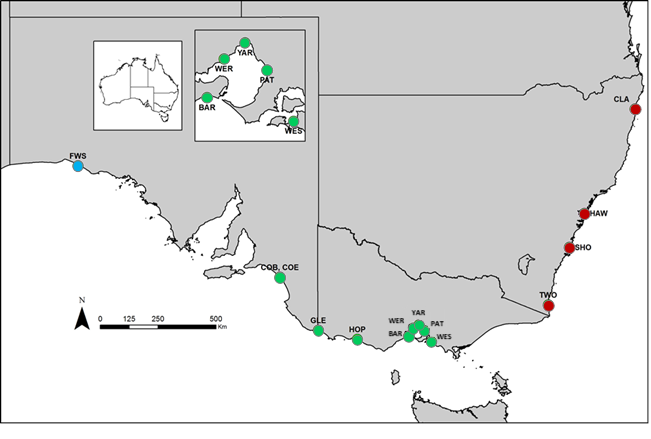Third Edition of the Mulloway Newsletter – Out Now!
The fishing in the Glenelg River has been firing the last few months, with plenty of anglers making the most of it. We’ve continued to receive a good number of frames as part of our mulloway citizen science project, which is funded by the Victorian Government through Recreational Fishing License Fees. Data collected from recent frame donations have been used to produce the Third Edition of the Mulloway Newsletter, which is available HERE. The aim of this newsletter is to provide anglers with an overview of the information gained as a direct result of their involvement.
Since the program began in late 2014, over 130 recreational anglers have collectively donated almost 550 mulloway frames to research. Donated mulloway range in total length from 51 to 150 cm, and have been aged between 3 and 25 years. The majority of mulloway caught from Victorian estuaries have been juveniles, below the approximate length at maturity (85 cm). This highlights the importance of estuarine systems as key nursery areas.

Ebony Phipps with her 152 cm mulloway caught from Western Port Bay. Ear bones (or otoliths) were donated to the research program for age and growth studies. The picture shows an image of the otolith section used to age Ebonys fish.
Frame donations have also provided the necessary samples for us to undertake genetic analyses to better understand Victorian stock structures of mulloway. The analyses revealed that mulloway occurring between the Coorong in South Australia and Westernport Bay form a single randomly mating stock. This is consistent with acoustic tagging work by the Arthur Rylah Institute that showed connectivity between the Coorong and the Glenelg River.

Map of sampling locations for genetic analyses, colour coded to represent the three distinct subpopulations: western South Australia (blue), South East South Australia- Victoria (green) and New South Wales (red).
The mulloway citizen science project continues to provide critical information on age structures and growth rates, estimates of maturity for Victorian mulloway and has recently redefined stock boundaries through genomics. Equally important is the opportunity of engaging with anglers and allowing them to contribute to increased knowledge, and ultimately improved species management. A huge thank you to all those anglers involved in the research program!
A reminder that this research project is ongoing until the end of 2018 so if you haven’t yet donated a fish frame, there is still plenty of time!
All you need to do, is bag up your fish frame, label with date and location of capture and your contact details, then drop it off at one of our participating locations. Locally, these include Spot On Fishing Tackle Mt Gambier, Nelson Kiosk and the Tackle Shack in Warrnambool. You can also get in touch with Lauren to arrange collection (0439 034 390). Keep up to date through our Facebook Page: www.facebook.com/groups/mullowaycitizenscience.
Stay tuned for more information about our new mulloway recreational tagging project! More details to come.
